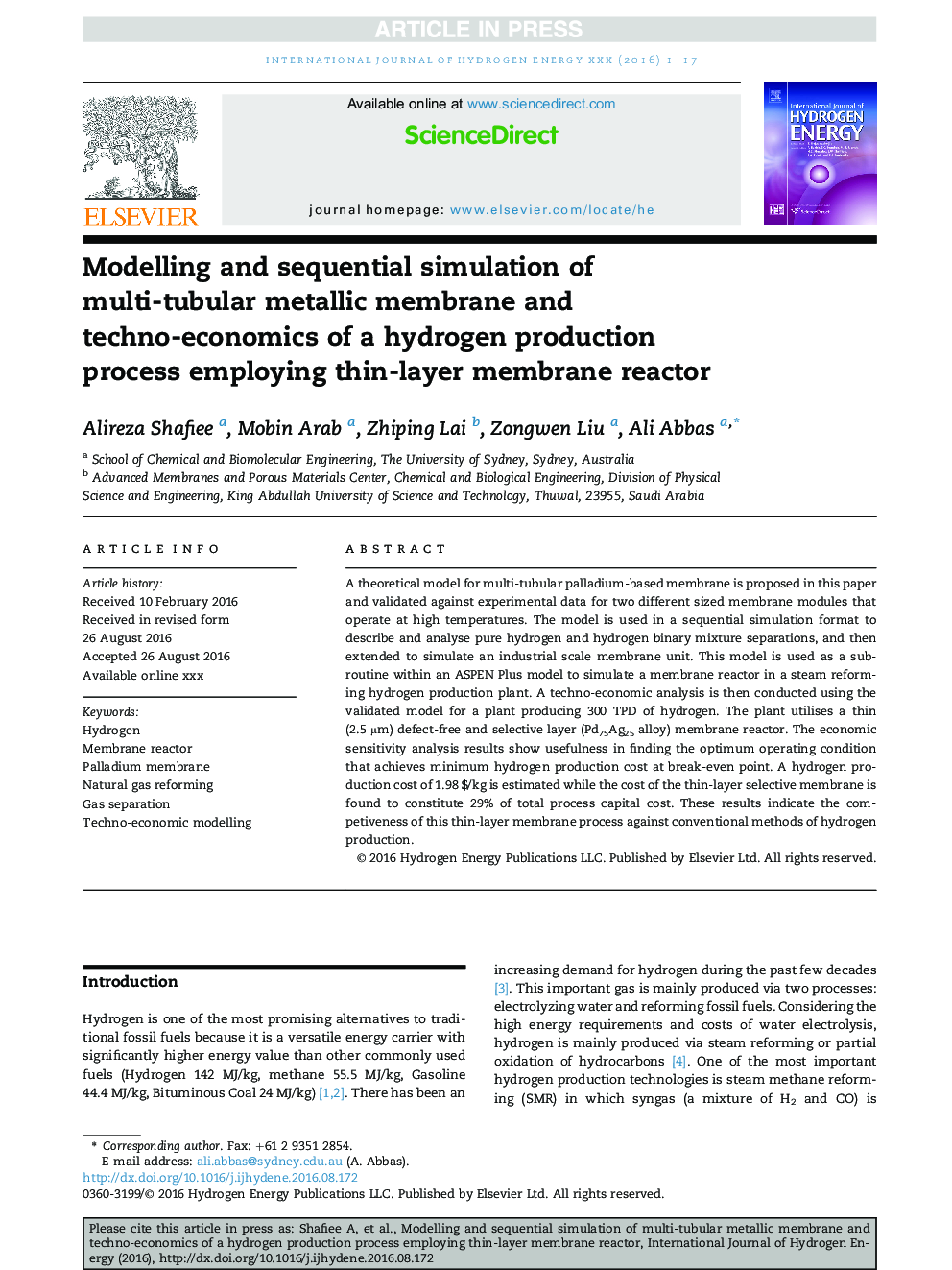| Article ID | Journal | Published Year | Pages | File Type |
|---|---|---|---|---|
| 5147159 | International Journal of Hydrogen Energy | 2016 | 17 Pages |
Abstract
A theoretical model for multi-tubular palladium-based membrane is proposed in this paper and validated against experimental data for two different sized membrane modules that operate at high temperatures. The model is used in a sequential simulation format to describe and analyse pure hydrogen and hydrogen binary mixture separations, and then extended to simulate an industrial scale membrane unit. This model is used as a sub-routine within an ASPEN Plus model to simulate a membrane reactor in a steam reforming hydrogen production plant. A techno-economic analysis is then conducted using the validated model for a plant producing 300 TPD of hydrogen. The plant utilises a thin (2.5 μm) defect-free and selective layer (Pd75Ag25 alloy) membrane reactor. The economic sensitivity analysis results show usefulness in finding the optimum operating condition that achieves minimum hydrogen production cost at break-even point. A hydrogen production cost of 1.98 $/kg is estimated while the cost of the thin-layer selective membrane is found to constitute 29% of total process capital cost. These results indicate the competiveness of this thin-layer membrane process against conventional methods of hydrogen production.
Keywords
Related Topics
Physical Sciences and Engineering
Chemistry
Electrochemistry
Authors
Alireza Shafiee, Mobin Arab, Zhiping Lai, Zongwen Liu, Ali Abbas,
